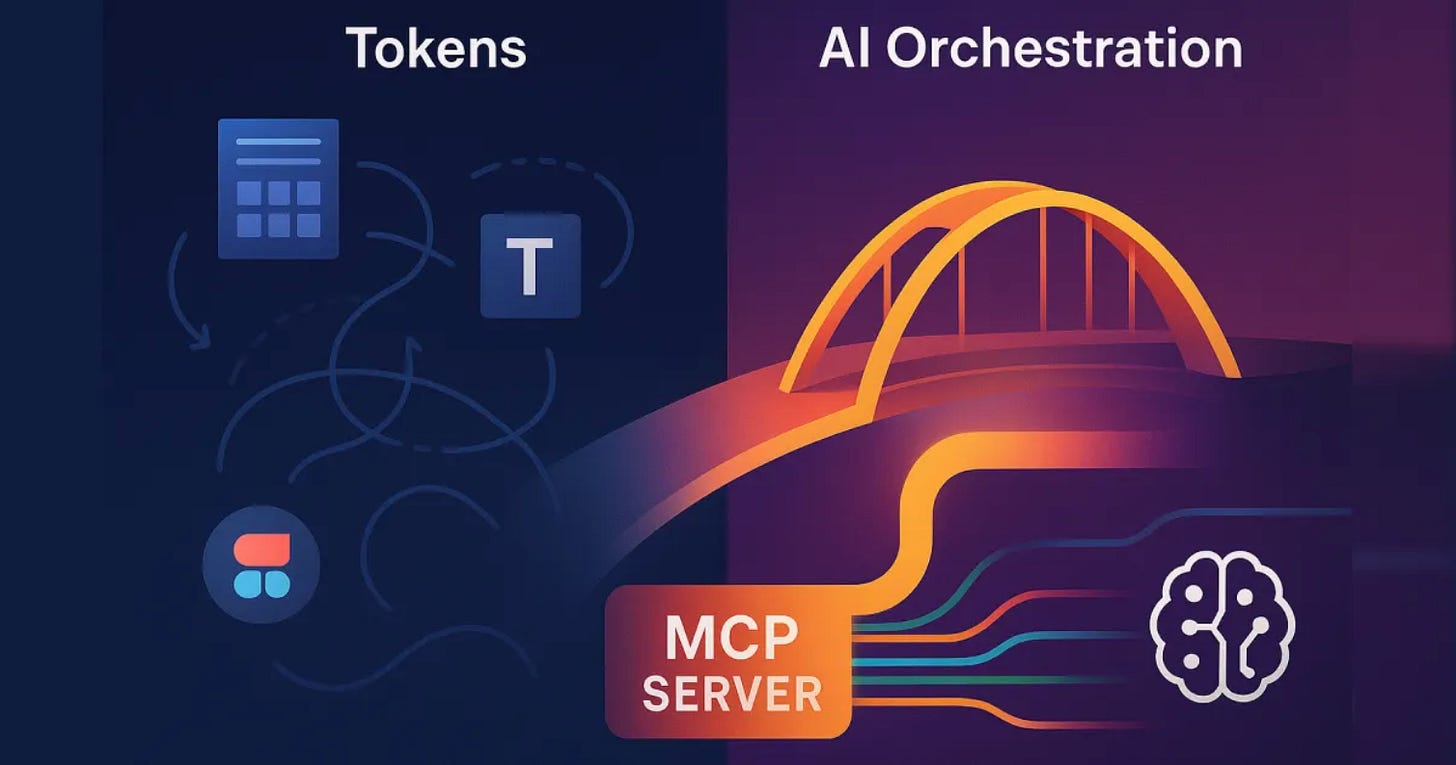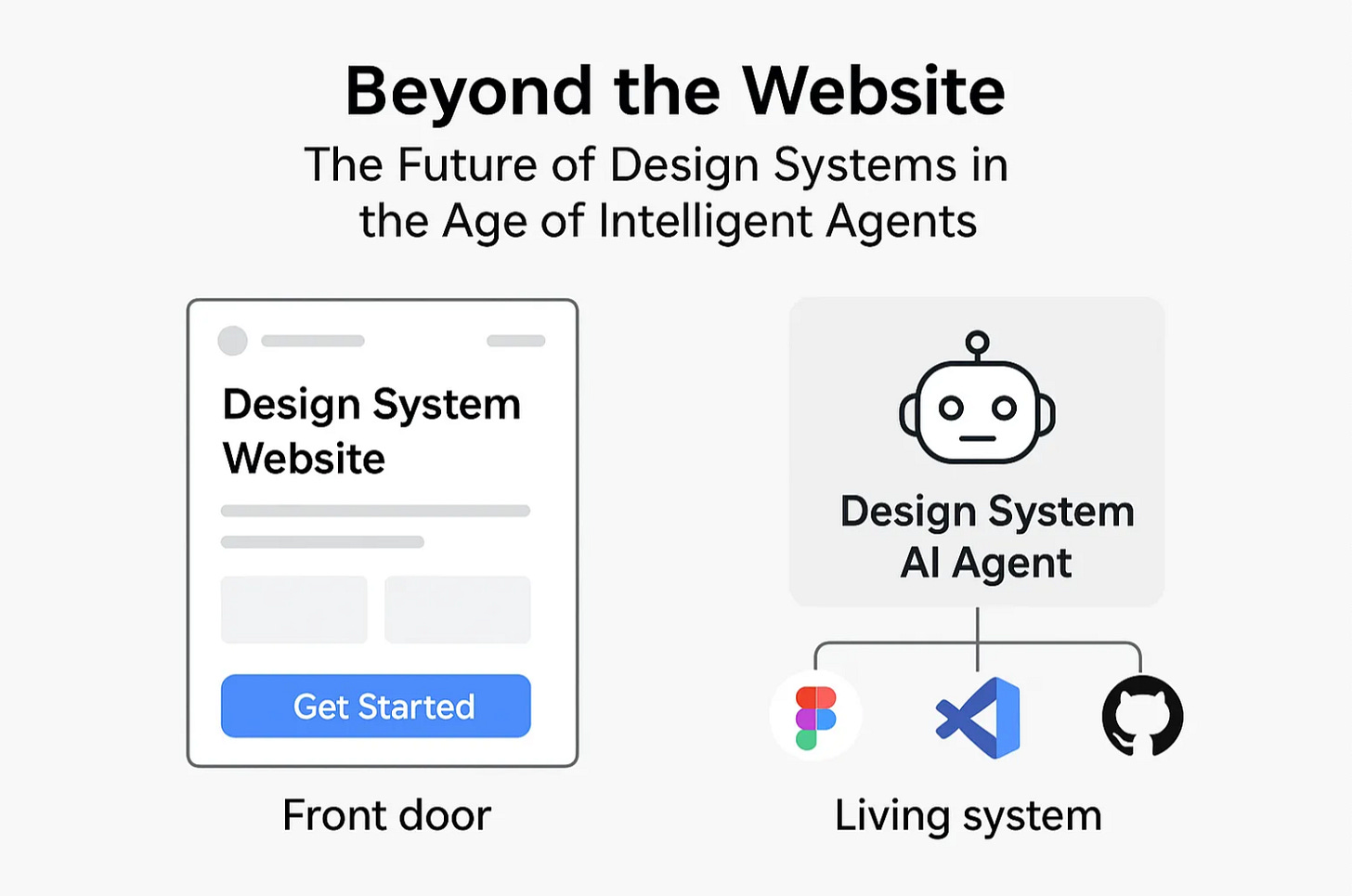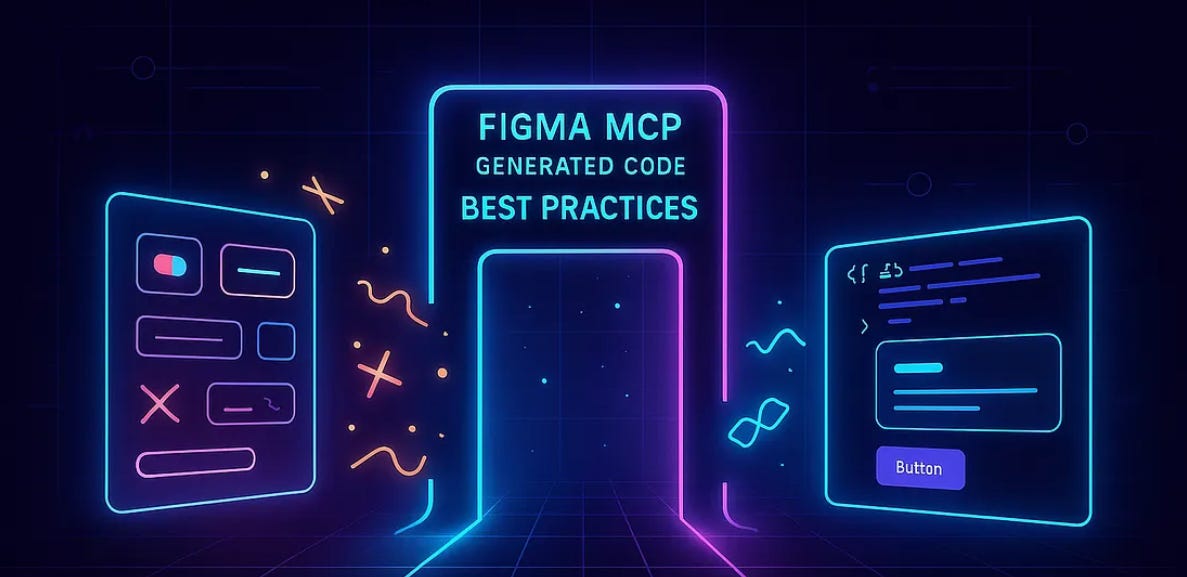If last week was about polishing the frame, this week is about what powers the engine. From AI-driven multi-brand automation to the unglamorous (but vital) backbone of infrastructure, the latest articles dive into both the futuristic “what’s next” and the practical “what works now.” You’ll find sharp takes on MCP’s potential (and pitfalls), lessons in scaling sustainably, and even a glimpse at where design systems may head in the age of intelligent agents. In short: a mix of guardrails and crystal balls.
In this issue
📚 Featured Articles
📰 Published in the Last Week
📝 Closing Thoughts
📚 Featured Articles
Must-read articles at www.designsystemscollective.com.
💡 Have an article to share? Submit it here!
How AI + MCP Server Will Automate Multi-Brand Design at Scale by Ryda Rashid
Don’t Miss: The section “What MCP Enables for Design Systems” — concrete use-cases like automated audits, brand adaptation, multi-tool sync — this grounds the innovation. It pushes beyond the “token + component” baseline to show what automation + real‐time tooling can do for scaling multi-brand design — which feels very relevant right now (and a little futuristic in a good way).
Don’t Miss: The section “What MCP Enables for Design Systems” — concrete use-cases like automated audits, brand adaptation, multi-tool sync — this grounds the innovation.
Design Systems Decoded: Think Infrastructure, Build Fast, Keep It Alive by Rajesh Dey
Why We Like It: Practical infrastructure thinking + speed + maintenance is a trio many struggle with; this article seems to combine them well.
Perfect For: Those building or overhauling their system’s technical backbone or thinking about long-term sustainability.
Beyond the Website: The Future of Design Systems in the Age of Intelligent Agents by Angus Ewing
Why We Like It: This one stretches the imagination: where design systems might need to evolve when intelligent agents become part of UX.
Perfect For: Folks thinking long-term / exploring AI-adjacent design systems.
Best Practices for Consuming and Maintaining Figma MCP-Generated Code by Youssef Taghlabi
Why We Like It: It doesn’t treat Figma MCP as a magic box — instead the author gives practical guardrails (connect components, keep generated code traceable, enforce lint/coverage, and maintain overrides) that make MCP output actually usable in production — a useful, no-fluff bridge between design and engineering.
Pro Tip: Don’t generate code from unconnected frames — use Figma Code Connect to map frames to your canonical components, add clear source markers in generated files so every snippet can be traced back to its Figma origin, and enforce an ~80%+ design-system coverage/linting threshold to stop generated code from drifting into freelancing territory.
📰 Published in the Last Week
To stay updated on the latest articles, we share every new article on our LinkedIn page.
👉 The Myth of the Perfect System by Murali
👉 How AI + MCP Server Will Automate Multi-Brand Design at Scale by Ryda Rashid
👉 5 Design System Mistakes That Look Small but Cost Big by Ashish Garg
👉 What I Learned by Designing My First Component Library by Muntaha
👉 Building a Design System From Scratch: My Journey at WGU by Uday Kumar Madarapu
👉 Beyond the Website: The Future of Design Systems in the Age of Intelligent Agents by Angus Ewing
👉 Are Designers Supposed to Be Developers Now? Figma’s AI-Powered Tools Say Yes by Youssef Taghlabi
👉 Design Systems Are Not Complete Without Usability Testing by Madhesh P
👉 Bringing Consistency Through Our Internal Design System by Karl Nuttall
👉 Design Systems Decoded: Think Infrastructure, Build Fast, Keep It Alive by Rajesh Dey
👉 Building a Popover Component: Beyond the Surface by Karl Nuttall
👉 Pivoting My Career into Design System Development by SalvaSC
👉 8 Things Every Design System Should Document by Niamh O'Shea
👉 Top 10 Underrated Widgets in Flutter by Jack Henry
👉 Best Practices for Consuming and Maintaining Figma MCP-Generated Code by Youssef Taghlabi
📝 Closing Thoughts
Reading this week’s mix, one thing stood out: design systems are no longer just supporting product work — they’re starting to anticipate it. Whether that’s through AI-driven audits, stronger infrastructure, or forward-looking thinking, the conversation is shifting from maintenance to momentum. The next step is on us: how do we ensure the systems we build today don’t just keep pace, but set the pace?
Shane P Williams — Founding Editor






